
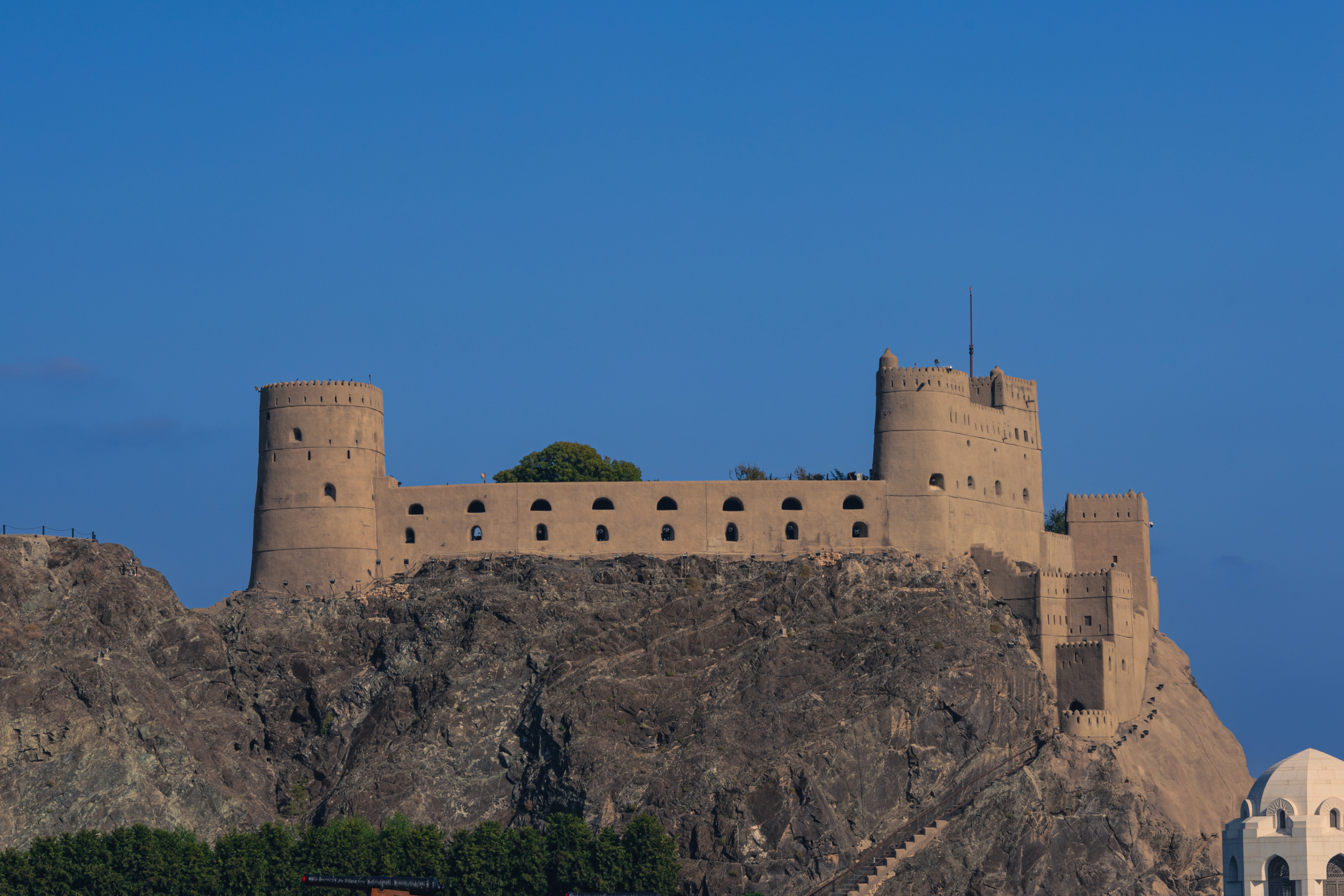
5 Fascinating Facts About Al Jalali Fort Muscat You Didn’t Know
Al Jalali Fort Muscat rises majestically from a rocky outcrop above Muscat’s crystal-clear waters. This ancient sentinel has watched Omani history unfold beneath its weathered walls for centuries. Many locals don’t even know the secrets behind what seems like a simple military fortress today.
The fort’s story spans generations. It transformed from a formidable defense post into a high-security prison, and now welcomes visitors as a prestigious museum. We’ve discovered amazing tales about this 16th-century Portuguese fortress that will transform your view of this iconic landmark.
Let me share the fort’s most captivating secrets with you. You’ll learn about its time as a feared prison, discover its hidden architectural features, and explore ancient legends. The fort’s role in modern royal ceremonies makes it one of Oman’s most important historical treasures. These five remarkable facts will show you why.
The Secret Prison Years of Al Jalali
The Al Jalali Fort’s history includes a dark chapter as Oman’s most notorious prison. These formidable walls held some of the country’s most important prisoners throughout the 20th century. The facility reached its peak capacity of 200 inmates during its most turbulent period.
Notable prisoners and escape attempts
Two major conflicts brought fighters to this fortress-turned-prison: the Jebel Akhdar War (1954-59) and the Dhofar Rebellion (1962-76). The dramatic escape attempts from these walls tell fascinating stories. Here are the most remarkable breakouts:
- A bold mass escape in 1963 saw 44 prisoners arrange a calculated breakout. Their weakened physical state led to their quick recapture
- The 1969 escape involved a guard who helped two royal family members flee. They were caught just days later
Life inside the fortress prison
Colonel David Smiley, commander of the Sultan’s armed forces at Muscat, called Al Jalali Fort “a veritable hellhole.” The prison earned its reputation as one of Oman’s most dreaded facilities due to its remote location and harsh conditions. Amnesty International labeled it a ‘dungeon’ after the Red Cross was denied entry.
The fortress became an ideal prison because of its natural isolation. Its steep staircase from the port side and two connected towers created an almost impossible space to escape. The harsh environment matched its grim purpose.
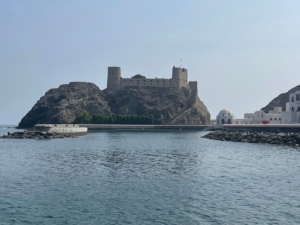
Transition from prison to museum
The 1970s marked a new beginning as the prison closed its doors. An extensive restoration project in 1983 revolutionized this once-feared prison into an elegant museum. The halls that once held prisoners now showcase culture and history. The Portuguese influence remains evident through scattered inscriptions. This museum stands as evidence of Omani cultural history, though it welcomes only visiting dignitaries and heads of state.
Hidden Architectural Marvels
The hidden corners of Al Jalali Fort Muscat never cease to amaze me with their ingenious architectural features that most visitors never see. The fort’s design reveals an incredible story of innovation and cultural fusion that reaches way beyond its imposing exterior.
Ancient water systems and cisterns
The fort’s self-sustaining water system stands out as its most impressive design feature. The intricate network of water storage facilities could support hundreds of occupants during long sieges. The designers created an impressive system of cisterns to collect and store rainwater, along with wells that served as a backup supply.
Secret passages and defensive features
The fort’s defensive innovations showcase remarkable military engineering. These groundbreaking features made Al Jalali Fort nearly impossible to breach:
- Reinforced walls with strategic slanting to deflect cannon fire
- Carefully angled gun ports providing maximum defensive coverage
- Innovative ‘active defense’ systems sunk into ditches
- Clever entrance design with small cut-out doors forcing visitors to enter one at a time
The sort of thing I love about the fort’s defense is the slot system above the entrances. These openings had a brutal purpose – they let defenders pour boiling date mixture (asal) onto unwelcome visitors.
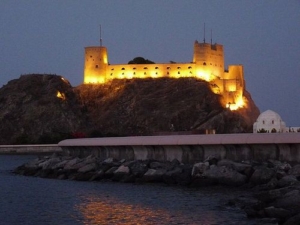
Unique blend of Portuguese and Arabic design
Al Jalali Fort’s remarkable fusion of European and Arabian architectural styles makes it truly special. Portuguese military engineering blends naturally with traditional Omani building techniques. The walls showcase this story through their distinctive use of sarooj (traditional Omani plaster) applied over Portuguese masonry methods.
The fort’s twin towers, connected by a fortified wall, represent a perfect marriage of Portuguese defensive architecture and local building traditions. The central courtyard creates a space that serves both military and cultural purposes, surrounded by multiple levels.
The fort’s interior transformation catches everyone’s eye. The space now features elegant fountains and peaceful pools that create a striking contrast with its military exterior, while keeping its historical character intact. This mix of harsh defensive elements with refined architectural details shows evidence of cross-cultural architectural innovation.
Legends and Local Tales
The legends of Al Jalali Fort have always fascinated me. These stories blend romance, betrayal, and heroic feats seamlessly. My exploration of these tales takes me through centuries of Omani folklore that shaped this magnificent structure’s identity.
The story of Mir Jalal Khan
The name Al Jalali Fort comes with two interesting origin stories that I found. Some believe it comes from:
- Al Jalal – meaning “great beauty” in Arabic, which matches the fort’s stunning appearance
- Mir Jalal Khan – a legendary Baluchi commander from the Hooth tribe, whose brother Mir Miran gave his name to the neighboring Al-Mirani Fort
The sort of thing i love about these naming theories is how they show the fort’s dual heritage – both as an architectural marvel and a symbol of military might.
Myths surrounding the fortress construction
One of the most fascinating tales I found that there was a Portuguese commander who fell in love with a local merchant’s daughter. The marriage was forbidden on religious grounds, and the commander threatened the merchant with consequences.
The merchant’s response showed the legendary cunning of Omani strategists. He pretended to agree but asked for a year to prepare. During this time, he coordinated a brilliant plan. He slowly removed ammunition and supplies from the fort while claiming to replace them. Once the fortress stood defenseless, he signaled Sultan bin Saif, who captured the stronghold easily. This marked the beginning of Portuguese control’s end.

Supernatural stories from former guards
The fort served as a prison in the 20th century and earned a reputation for mysterious events. Guards that worked there tell stories about unexplained footsteps in empty corridors and strange lights in tower windows at night. The fortress seems to come alive during full moons, with some people claiming they hear ancient Portuguese military commands in the wind.
These stories became more prominent when the fort changed from a prison to a museum in the 1980s. Workers reported strange incidents during renovations, especially when they disturbed centuries-old stones that had absorbed countless historical moments.
These legends are compelling because they blend with the fort’s documented history, creating an array of fact and folklore that continues to fascinate visitors like me today.
Royal Ceremonies and Modern Usage
The sun sets behind Al Jalali Fort Muscat as I watch one of the most spectacular royal ceremonies that changes this historical fortress into a stage of grandeur. Royal dhows and yachts sail majestically through the harbor while traditional bagpipers perform atop the ancient battlements. This creates an unforgettable scene where Oman’s rich heritage meets its vibrant present.
Special state ceremonies and celebrations
The fort comes alive with ceremonial splendor during palace military occasions. The most captivating moments include:
- Traditional bagpipers performing from the battlements
- Royal vessels sailing in full regalia through the harbor
- Spectacular fireworks reflecting off the water, creating a mesmerizing display
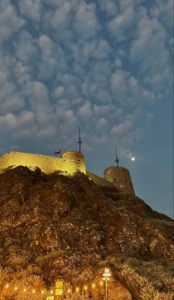
Role in diplomatic relations
Al Jalali Fort stands out with its prestigious role in modern diplomacy. The fort welcomes distinguished foreign dignitaries and naturally blends historical grandeur with modern diplomatic protocol. Its status as a private museum adds to its prestige. Distinguished international visitors come here to understand Oman’s rich cultural heritage.
Modern museum collections and exhibits
The central square tower houses one of the most impressive collections of Omani cultural artifacts I’ve seen. The museum’s collection amazes visiting dignitaries with its extensive array of cultural treasures. Ancient rugs, traditional weapons, and rare incense holders fill the exhibits.
The military collection catches my eye, especially the perfectly preserved cannons at their original gun ports. These come complete with authentic shot, ropes, and firing equipment. Maps and illustrations in the historical documents section bring Oman’s maritime history to life.
Modern display methods blend seamlessly with historical artifacts throughout the museum. This creates an engaging experience that honors both past and present. Each room tells its own story. The palm-log ceiling chamber holds cultural relics, while dedicated spaces showcase traditional jewelry and household utensils.
The fort’s unique position as both a prestigious museum and a living monument makes it special. It actively participates in state functions while preserving centuries of Omani heritage. This dual purpose sets Al Jalali Fort apart from other historical monuments as it connects Oman’s past with its diplomatic present.
Restoration and Preservation Journey
The magnificent corridors of Al Jalali Fort tell a remarkable story of transformation. This fortress has evolved from a crumbling structure into an awe-inspiring monument. The preservation story captivates visitors as much as the fort itself.
1983 restoration project challenges
Research into the ambitious 1983 restoration project revealed complexities nobody predicted. The Omani government tackled unique challenges to preserve authenticity while maintaining structural integrity. Their steadfast dedication to historical accuracy stood out. The team analyzed original building materials to ensure perfect matches.
The fort’s distinctive walls presented the biggest problem. Previous attempts with cement plaster failed because the underlying mud-brick couldn’t release moisture. This setback led to one of the project’s most important breakthroughs.
Traditional techniques used in preservation
The preservation process merged ancient wisdom with modern expertise beautifully. A specialized team of 60 Moroccan craftsmen brought their expert skills to the project. Their unique approach included:
- Traditional sarouj production using local palm grove soil
- Custom-blended materials for each section of the fort
- Hand-crafted woodwork using only dead palm trunks
- Authentic metalwork replication
- Traditional paint mixing techniques
The sort of thing I love is the meticulous process of creating sarouj, the traditional Omani plaster. The team needed six months to perfect the mixture for different sections, using local earth to maintain authentic textures and colors.
Future conservation plans
The fort now combines historical preservation with modern protection methods effectively. A current conservation strategy where modern monitoring systems provide early warnings about structural issues, ensuring the fort’s survival. Technology merges with the fort’s historical elements without compromising its integrity.
Protection measures extend beyond the main structure. Advanced techniques like pressure grouting and rock bolting stabilize the surrounding rock foundation. The Sultanate’s collaboration with international experts for continuous monitoring builds confidence in the fort’s future.
Local craftsmanship shows promising signs of revival. Young apprentices from nearby towns learn traditional skills like carpentry and sarouj-making. This investment in human capital is a vital part of preserving the fort’s legacy.
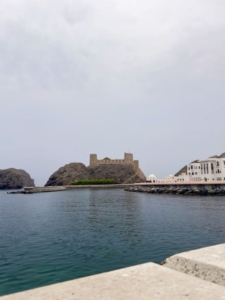
Conclusion
Al Jalali Fort represents more than a military fortress – it embodies centuries of Omani resilience, innovation, and cultural heritage. This magnificent structure tells a remarkable story of the transformation from a feared prison to a prestigious museum. Its architectural brilliance shines through the seamless blend of Portuguese and Arabic design elements.
The fort’s influence reaches way beyond the reach and influence of its physical walls. Legendary tales, royal ceremonies and meticulous preservation efforts connect Oman’s rich heritage with its vibrant present. The Sultanate demonstrated its commitment to safeguarding history through a successful restoration in 1983. This project adapted the historical monument perfectly for modern diplomatic functions.
Some places capture more than historical significance – they reflect a nation’s spirit. Al Jalali Fort’s progress from a military stronghold to a symbol of Omani diplomacy shows how preservation can breathe life into history while meeting today’s needs. Where every journey is tailored, and every memory is priceless make your decision and Book Now!
